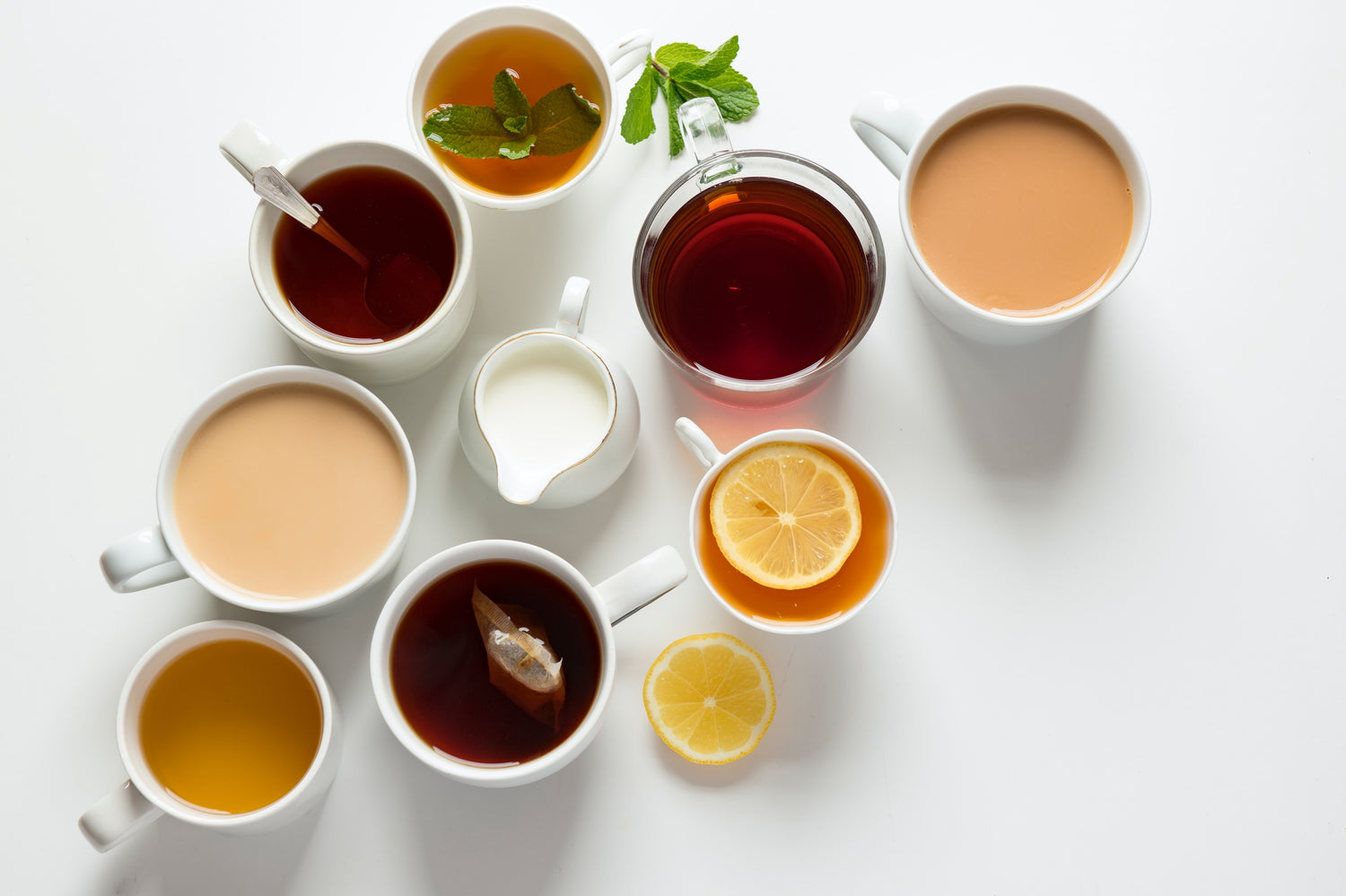Energy With Focus: Caffeine + Tea

Everyday roughly two billion people around the globe drink tea. That makes it the most popular beverage in the world next to water. The benefits of tea drinking are bountiful, but one effect that resonates with the masses is tea’s caffeine properties.
Monks are largely responsible for popularizing tea across the Buddhist world and later on was brought to the Western world by merchants. As early as 200 B.C, Monks used tea as a tool for meditation because of its caffeine content. It gave them enough energy and focus to stay present in the moment all the while warding off sleep. The best part (and we’re sure millions can attest!) is that caffeinated tea produces less caffeine-induced anxiety and jitters compared to coffee and other stimulant drinks. There’s a physiological reason for it, too, and we can thank the amino acid called l-theanine.
L-theanine is found primarily in green and black tea. The amino acid is unique to tea and suppresses the absorption of caffeine in the body and it also gives off a natural calming and anxiety-reducing effect as well. There’s no other drink in the world that naturally does this, which is pretty amazing! That means you can say goodbye to caffeine crashes because there’s no “rush,” instead the caffeine is slowly released into the body over a longer period of time.
What does this mean for brewing caffeinated tea at home?
The caffeine extraction process is very different for loose leaf teas versus tea bags. Our blog and tearoom focuses exclusively on loose leaf tea.
For loose leaf tea, there are multiple factors to consider if you want to draw out a high-level of caffeine from your leaves. The caffeine concentration depends more on your steeping process rather than the tea itself.
The greatest impact on your tea’s caffeine concentration is the temperature of the water you’re steeping with as well as how long you steep the tea leaves. As a rule of thumb, we recommend steeping green teas at 175 degrees Fahrenheit for 3 minutes and for black teas we recommend 195 degrees Fahrenheit for 5 minutes to maximize the tea’s caffeine properties. The longer the steep time and the higher the water temperature, the more caffeine. That doesn’t necessarily mean you want to steep your tea for an extraordinarily long time or at too high of temperature because these conditions also introduce more tannins, bitterness, and astringency.
How does the caffeine concentration in tea compare to coffee?
It might be surprising to learn that tea leaves in their dry form contain more caffeine than coffee. The roles become reversed however once the tea leaves are steeped.
The main reason that tea ends up being less caffeinated than coffee is because we need less concentration of tea to produce a flavorful cup compared to coffee. On average an individual uses 3 grams of tea leaf per 8 ounces of water. For coffee, the average cup uses 7 grams for the same quantity of water.
What are the environmental factors that affect caffeine levels?
The topography, climate, soil, and many other environmental factors of a region impact the flavor and caffeine levels of tea leaves. Terroir is a term used when considering the full environmental habitat of a tea plant and how it affects the tea leaves' outcome. Here are few factors that increase a tea’s caffeine content:
- High altitudes
- Leaves that grow further up on the plant branch
- Teas harvested earlier in the season
What is the caffeine range for tea?
The beauty of tea is its variety and that applies to its caffeine levels as well. There are teas that on the higher echelon contain up to 100 grams of caffeine in a very strong cup and then there are herbal teas that contain no caffeine at all.
High Caffeine Content
- Gyokuro (top tier Japanese green tea)
- Darjeeling (high-grown Indian black tea)
- Matcha (ground [therefore concentrated like coffee] Japanese green tea)
- Zenergy (Schastea’s house-blend infused with CBD)
Low Caffeine Content
- Hojicha (roasted Japanese tea, made late harvest)
- Mountaintop (roasted Oolong tea)
- Green Pear (green tea blended with fruit and herbs)
Caffeine Free - note that many “decaffeinated” teas still retain a few mg of caffeine
- Tulsi (popular invigorating herb also known as “Holy Basil”)
- Chamomile (popular relaxing herb)
- Peppermint






